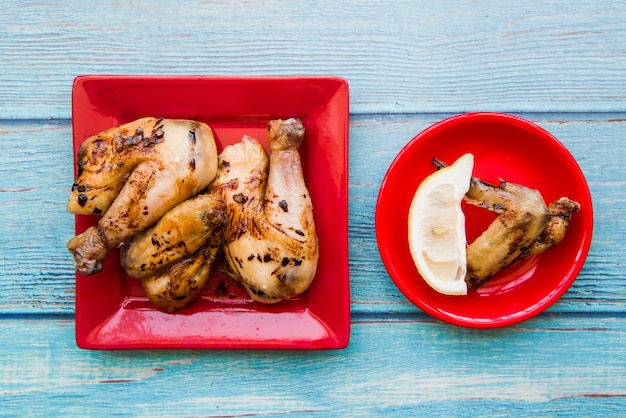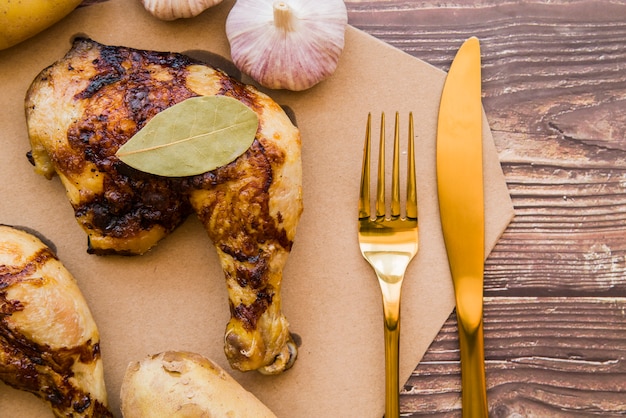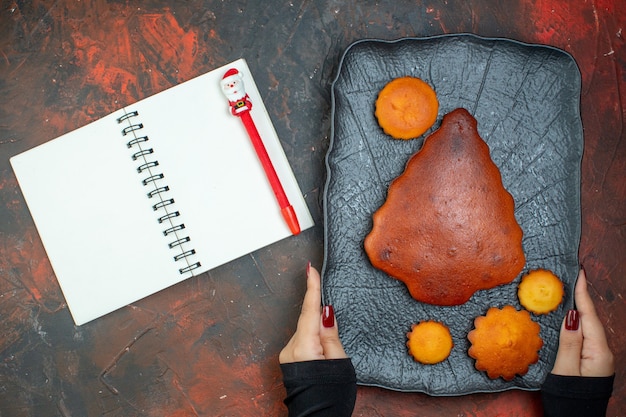There's something incredibly satisfying about cooking a cornish hen. It's just the right size for a cozy dinner for two, and the flavor? Oh, the flavor! But achieving that perfect golden brown, juicy, and tender result requires a bit of finesse, especially when working with that 350-degree oven. So, join me on this culinary journey as I share my secrets to mastering the Cornish hen, from understanding cooking time to embracing the art of roasting.
(Part 1) The Cornish Hen: A Bite-Sized Delight

Let's face it, a whole chicken can be a bit daunting. It's large, takes forever to cook, and sometimes, you just crave a delicious meal without the commitment. That's where the Cornish hen shines. This little beauty, a hybrid of a Cornish chicken and a White Rock chicken, is a culinary gem. It's petite, about the size of a large pigeon, making it ideal for a single serving or a meal for two. And the flavor? It's remarkably tender, juicy, and brimming with flavor.
A Little History:
The Cornish hen's history dates back to the 1950s, a time when poultry farmers began breeding chickens for rapid growth. The result? A chicken that reaches full size in a mere 6-8 weeks, offering a delicious, quick meal option. It wasn't long before Cornish hens became a staple in kitchens worldwide.
Why Cornish Hens are My Go-To:
I've always been drawn to the versatility of Cornish hens. They're perfect for simple roasting, grilling, or even pan-frying. I find them incredibly easy to cook, and the results are consistently impressive. Plus, let's not forget the presentation. A perfectly roasted cornish hen, glistening with juices and boasting a beautiful golden-brown skin, elevates any table setting.
(Part 2) The 350-Degree Challenge: Understanding the Science of Roasting

Now, let's get to the heart of the matter: cooking a Cornish hen at 350 degrees Fahrenheit. It's a classic oven temperature for roasting, but it requires a keen eye and understanding of how the hen reacts to the heat. Our goal? Juicy meat and crispy skin, not dry, tough, or burnt poultry.
When you place a Cornish hen in a 350-degree oven, the heat penetrates the meat, causing the proteins to denature and the moisture to evaporate. It's a delicate dance of heat and moisture, a balance we need to master. We want enough heat to cook the hen thoroughly, but not so much that it dries out. This is where cooking time becomes crucial.
(Part 3) Factors Affecting Cooking Time: Mastering the Variables

Cooking time is not a one-size-fits-all situation. Several factors influence how long it takes to cook a Cornish hen at 350 degrees:
- Size of the Hen: A smaller hen will naturally cook faster than a larger one. Always check the weight of your hen before you start cooking. A general rule of thumb: the smaller the hen, the shorter the cooking time.
- Oven Temperature: While 350 degrees is the standard for roasting, your oven might run slightly hotter or cooler. Use an oven thermometer to ensure accuracy. Even a few degrees difference can impact cooking time.
- Stuffing: If you're stuffing your hen, it will take longer to cook because the stuffing acts as an insulator, slowing down heat penetration. Be sure to cook the stuffing separately before placing it inside the hen to avoid undercooked stuffing, a serious food safety risk.
- Cooking Method: A whole hen will take longer to cook than a hen cut in half, as the heat has a greater surface area to penetrate. Consider the cooking method when planning your cooking time.
(Part 4) The Magic Number: Cooking Time Guide
You've got your Cornish hen, you've preheated your oven to 350 degrees, and you're ready to go. The general guideline for a whole Cornish hen at 350 degrees is 45 minutes to an hour. However, as we've discussed, it can vary depending on the size and other factors. Here's a more precise guide:
| Hen Weight | Cooking Time (Minutes) |
|---|---|
| 1-1.5 pounds | 45-55 |
| 1.5-2 pounds | 55-65 |
| 2-2.5 pounds | 65-75 |
These are just estimates. Checking the internal temperature of the hen with a meat thermometer is crucial to ensure it's cooked through. Trust me, I learned the hard way from a slightly undercooked hen. It's not a pretty sight!
(Part 5) The Meat Thermometer: Your Reliable Ally
My meat thermometer is my culinary sidekick. It takes the guesswork out of roasting and ensures a perfectly cooked Cornish hen every time. Aim for an internal temperature of 165 degrees Fahrenheit in the thickest part of the thigh. That's when you know it's truly done to perfection.
(Part 6) The Art of Roasting: More Than Just Throwing it in the Oven
You might think roasting a Cornish hen is simple: pop it in the oven and forget about it. But, believe me, there's an art to it, especially when you're aiming for that juicy, flavorful, and crispy result. It's about prepping the hen properly, understanding the heat, and knowing when to pull it out.
Preparing the Hen for Roasting Glory:
Before the hen even enters the oven, it's essential to prepare it properly. Here's my step-by-step guide:
- Pat it dry: Start by patting the hen dry with paper towels. This helps the skin to crisp up beautifully.
- Season it with love: Rub the hen generously with salt, pepper, and any other herbs or spices you fancy. I adore a simple blend of rosemary, thyme, and garlic.
- Tuck in the wings: Tuck the wings behind the back of the hen to prevent them from burning. It also helps to keep the hen in a more compact shape, allowing for even cooking.
- Optional: Stuffing: If you're stuffing the hen, ensure the stuffing is cooked through before putting it in the oven. This prevents undercooked stuffing, a food safety concern. I often prefer to roast the stuffing separately, as it can sometimes overpower the delicate flavor of the hen.
- Roasting Rack: Place the hen on a roasting rack in a baking pan. This allows air to circulate around the hen, ensuring even cooking and a crispy skin.
(Part 7) The Secret to Crispy Skin: The Roast and Rest
Okay, your prepped hen is in the oven, and you're eagerly waiting for that beautiful golden-brown color. But the journey to crispy skin is more than just throwing the hen in the oven.
The High-Heat Trick:
Here's a little secret I've learned: start the roasting at a higher temperature, around 400 degrees Fahrenheit for the first 15-20 minutes. This initial burst of heat helps to crisp up the skin, creating that lovely, golden-brown exterior. Then, reduce the temperature to 350 degrees for the remaining cooking time.
The Rest is Key:
Once the hen is cooked through, resist the urge to carve it immediately. Let it rest for 10-15 minutes before carving. This allows the juices to redistribute throughout the meat, making it even more tender and flavorful. It also helps to keep the skin crispy. Patience, my friend, is key to achieving the perfect roast.
(Part 8) Serving Up Perfection: Garnishes and Sides
Your Cornish hen is cooked to perfection, resting and ready to be carved. Now, let's talk about how to make it look and taste even more divine.
Garnishes:
A simple garnish can elevate a Cornish hen to another level. I like to use fresh herbs like parsley, chives, or rosemary. You can also add a squeeze of lemon juice or a drizzle of honey for a touch of sweetness. A sprinkle of toasted sesame seeds adds a nutty flavor and textural element.
Sides:
Cornish hen pairs beautifully with a variety of sides. Here are some of my favorites:
- Roasted vegetables: Try carrots, potatoes, asparagus, or Brussels sprouts. Roasted vegetables add a burst of flavor and texture that complements the hen beautifully.
- Green salad: A simple green salad with a light vinaigrette balances the richness of the hen.
- rice pilaf: For a more substantial side, try a fragrant rice pilaf. It's both comforting and flavorful.
- mashed potatoes: creamy mashed potatoes are a classic pairing for roasted poultry. They provide a smooth and creamy counterpoint to the crispy skin and tender meat.
- wild rice: The nutty flavor of wild rice adds a unique touch to the dish. It pairs especially well with herbs and spices.
(Part 9) Beyond the Basics: Flavour Variations
You might think a Cornish hen is simple, just salt and pepper. But believe me, there's a whole world of flavor waiting to be explored. Let's unleash your creativity and add a little spice to your roasted Cornish hen.
Herbs and Spices:
Don't be afraid to experiment with different herbs and spices. Here are some ideas:
- Mediterranean: A blend of oregano, thyme, rosemary, and garlic adds a delicious Mediterranean flavour. A squeeze of lemon juice further enhances this profile.
- Indian: Tandoori spices like turmeric, coriander, cumin, and ginger will give your hen a vibrant and exotic taste. Combine them with yogurt for a tangy and flavorful marinade.
- Asian: A blend of soy sauce, ginger, garlic, and sesame oil offers a savory Asian twist. You can also add a touch of honey for a hint of sweetness.
- Smoky: Smoked paprika and chipotle powder add a smoky depth to your hen. Combine them with a touch of brown sugar for a sweet and smoky profile.
- Herbed Butter: For an extra touch of richness, create a simple herbed butter by blending softened butter with fresh herbs like parsley, chives, or tarragon. Place a dollop on the breast of the hen before roasting.
Citrus Flavours:
A touch of citrus can brighten up the flavor of your Cornish hen. Try adding lemon, orange, or lime slices under the skin or using their zest as a seasoning. The citrus zest will infuse the meat with a vibrant aroma and flavor.
(Part 10) FAQs: Solving Your Cornish Hen Quandaries
I know, cooking a Cornish hen can seem daunting, but it's really not that hard. However, I understand you might have some questions. So, let's tackle some common concerns.
FAQs:
- Can I use a different temperature? Yes, but 350 degrees Fahrenheit is generally considered the ideal temperature for roasting cornish hens. Using a higher temperature can lead to dry meat, while a lower temperature can result in undercooked meat. However, if you're short on time, you could try 375 degrees Fahrenheit, but keep a close eye on the cooking time. Use a meat thermometer to ensure the internal temperature reaches 165 degrees Fahrenheit.
- What if I don't have a meat thermometer? If you don't have a meat thermometer, you can check the doneness of the hen by inserting a sharp knife into the thickest part of the thigh. If the juices run clear and the meat is no longer pink, it's cooked through. However, this method is less accurate than using a thermometer. It's always best to invest in a reliable meat thermometer for safe and consistent results.
- How do I know if the hen is overcooked? The hen will be dry, tough, and may have a rubbery texture. The skin might be too crispy or even burnt. You'll also notice a lack of juices. So, if you're worried, err on the side of undercooking rather than overcooking. It's easier to cook a slightly undercooked hen for a few more minutes than to salvage an overcooked one.
- Can I freeze Cornish hens? Yes, you can freeze Cornish hens for up to 3 months. Make sure to wrap them tightly in plastic wrap or freezer paper and store them in the freezer. To thaw, place them in the refrigerator overnight. You can also thaw them in a bowl of cold water, but ensure the packaging is sealed to avoid contamination. Thaw frozen cornish hens in the refrigerator for best results.
- How can I tell if a Cornish hen is fresh? A fresh cornish hen will have a pleasant, slightly sweet smell. The skin should be firm and slightly taut, and the meat should be moist and springy. Avoid any hen that has a foul odor or feels slimy. If the skin is discolored or the meat is sticky, it's best to choose another hen.
- How do I store a cooked Cornish hen? Refrigerate cooked Cornish hens in an airtight container for up to 3-4 days. Ensure the hen is properly cooled before storing to prevent bacterial growth.
I hope this journey through the world of Cornish hens at 350 degrees Fahrenheit has helped you. Remember, practice makes perfect, and don't be afraid to experiment with different flavours and techniques. Happy cooking! Enjoy the delicious and satisfying experience of roasting a perfectly cooked Cornish hen.
Everyone is watching

Prime Rib Roast Cooking Time Chart: Per Pound Guide
Cooking TipsPrime rib roast. Just the name conjures images of lavish dinners, crackling fires, and hearty laughter. It’s ...

How Long to Bake Potatoes in the Oven (Perfect Every Time)
Cooking TipsBaked potatoes are a staple in my kitchen. They're incredibly versatile, delicious, and surprisingly easy to m...

Perfect Rice Every Time: The Ultimate Guide to Cooking Rice
Cooking TipsAs a self-proclaimed foodie, I've always been a bit obsessed with rice. It's the foundation of countless cuisi...

The Ultimate Guide to Cooking Asparagus: Tips, Techniques, and Recipes
Cooking TipsAsparagus. The mere mention of this spring delicacy conjures up images of vibrant green spears, crisp and burs...

Ultimate Guide to Cooking the Perfect Thanksgiving Turkey
Cooking TipsThanksgiving. Just the word conjures up images of overflowing tables laden with delicious food, the scent of r...
